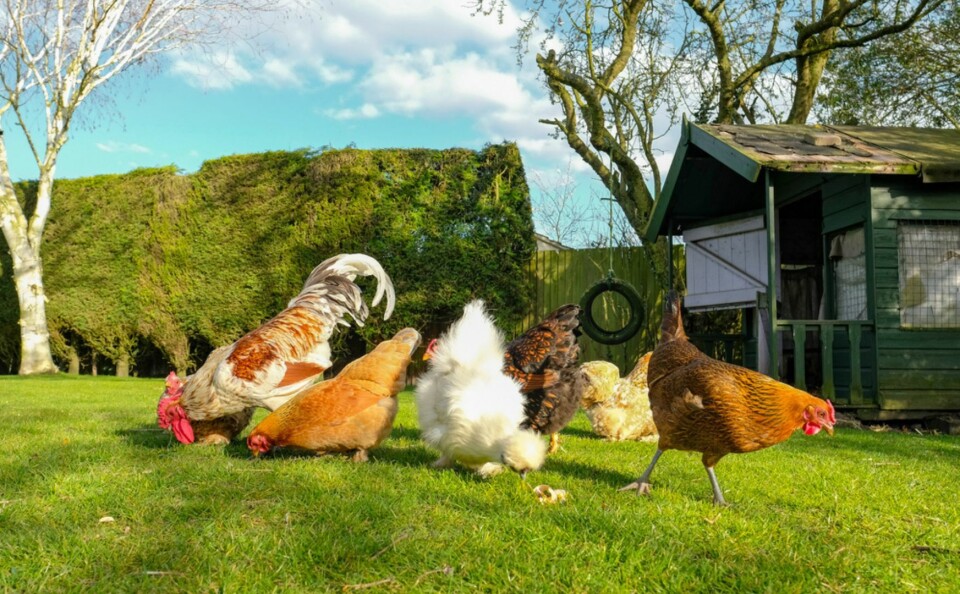-
Duck Cold! Four French phrases to use when it is freezing outside
We remind you of French expressions to use to describe the drop in temperature
-
January flowers in your French garden with scented viburnum
We explore a pretty pink shrub that gives long-lasting winter displays
-
When and why do we say le moral dans les chaussettes?
We explore this useful expression that describes low spirits
How to keep hens as part of a self-sufficient life in France
Tips on choosing the right breed, food and shelter from part-time paysanne Sue Adams

If your French adventure includes any form of self-sufficiency, keeping chickens will play an important part.
Hens are easily acquired from neighbours, garden centres and newspaper adverts in France, though most people buy them at the local market, where they are sold individually or en masse.
Why chickens are a good addition to your garden
Chickens love to eat leftovers and cull garden pests.
Their droppings are rich in nitrogen and other nutrients, which will speed up the decomposition of garden compost.
And, of course, you get fresh eggs.
If you raise the right breed, you can eat your own free-range chickens too, though you might want to ask a neighbouring farmer to kill and pluck them for you.
Read more: French egg shortages put spotlight on keeping hens at home
A good breed for laying eggs
If your immediate objective is free eggs, make sure that you buy a poule pondeuse, or a hen which is already producing. Choose a reliable, locally popular variety.
One of the most common breeds is the Transylvanian naked neck, commonly referred to as the cou nu.
This brown hen, easily identified by its long, feather-free neck, is an excellent layer, grows rapidly and provides good meat.
It can also withstand high temperatures – summer heatwaves will not put it off laying.
Do not confuse it with the cou nu de Forez, a white naked neck, which is less common and was bred in the Forez region of the Massif Central just after World War Two.
Hens do not need a cockerel, unless you would like to raise chicks, but they do need company – so get more than one.
Read more: What rules are there for keeping hens in our garden in France?
What to feed your chickens
Check with your mairie if there are any local restrictions on keeping hens – unlikely if you live in the countryside and they are for your own use.
You must provide them with adequate, secure housing and should feed them balanced hen food along with any scraps or surplus leafy vegetables.
Sacks of hen food can be bought at your local agricultural or garden supplier. These are often described as a mélange basse-cour and are appropriate for all farmyard fowl.
They contain mixed grains and some crushed shells (to help with eggshell formation and digestion), although it is not unusual to also see oyster shells tossed into a hen run as a nutritional supplement.
Shelter and safety from predators
We keep our hens in an old pigsty (porcherie), but you can buy wooden hen houses online or at your local DIY/garden centre.
Any dry building will do, as long as you can secure it at night when foxes and fouines (stone marten) do most of their hunting. Both will take a hen or two.
Fouines and couleuvres (a large non-venomous snake) will also eat their eggs.
An eccentric and ornamental breed
If you prefer a more ornamental hen, which still lays plenty of eggs, specialist chicken breeders are increasing in number.
You can also buy hens at poultry shows and agricultural fairs, including rare breeds.
Among the first hens we bought was a trio of black La Flèche chickens, which have a comb resembling the devil’s horns. The breed dates from the 1600s.
Ours were so eccentric that they refused to sleep in their hen house and spent every night roosting in a tree, coming down each morning to lay white eggs all over the garden.
Whatever the colour or size of your hens’ eggs, they are all edible. They should keep for up to a month, although quality declines as the eggs age.
Related articles
Eggs from chickens in private greater Paris gardens not to be eaten
La chair de poule and more French hen expressions
Nearly 10,000 hens rescued by charity Champs Libres aux Poules
























